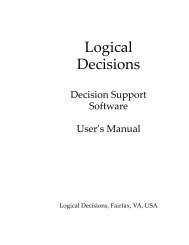AFTER VIOLENCE: 3R, RECONSTRUCTION, RECONCILIATION ...
AFTER VIOLENCE: 3R, RECONSTRUCTION, RECONCILIATION ...
AFTER VIOLENCE: 3R, RECONSTRUCTION, RECONCILIATION ...
Create successful ePaper yourself
Turn your PDF publications into a flip-book with our unique Google optimized e-Paper software.
soldiers were the limbs and "we" (the Emperor) the head, making<br />
the division of labor very clear. The officer sword was a source<br />
of pride; like for the Spanish conquistadores the sharpness to be<br />
tested on human bodies, beheading them with one stroke. The blind<br />
obedience in the structure, not only of the Imperial army but<br />
Imperial Japan has been pointed to as a culprit. This focus<br />
extends responsibility to those lower down who obeyed orders.<br />
In consultation with the Japanese peace researcher Kinhide<br />
Mushakoji a historical/cultural approach has been developed. One<br />
point of origin is the attempt by Emperor Hideyoshi (end of 16th<br />
century) to establish an East Asian empire through the conquest of<br />
Korea and China, with capital in Beijing. Hideyoshi was clearly<br />
aware of Western colonial ambitions at the time, and thought they<br />
could best be countered from China by bringing the Japanese<br />
Emperor there. Hideyoshi failed after having committed atrocities<br />
(the mound of Korean skulls in Kyoto is one example). And Emperor<br />
Ieyasu abandoned the project and took Japan into the Tokugawa<br />
isolation from 1600 to the 1868 Meiji Restoration.<br />
After the reentry of Japan in the world Hideyoshi's project<br />
may have been the model of foreign policy and was continued, but<br />
this time with Tokyo as capital. Japan was certainly catching up<br />
on the capitalist world project. Late Ching China was weak,<br />
unlike late Minh China, as proven by the Sino-Japanese war 1894-<br />
95. So was late Yi Korea, as proven by the Korean war 1910-11.<br />
Having conquered Taiwan and Korea, the logical next step was to<br />
invade China proper (1937), possibly via Manchuria (1931), with<br />
the dai-to-a/44/ as the ultimate East Asian Empire.<br />
But why the massacre in Nanking, why not just conquer China<br />
38
















